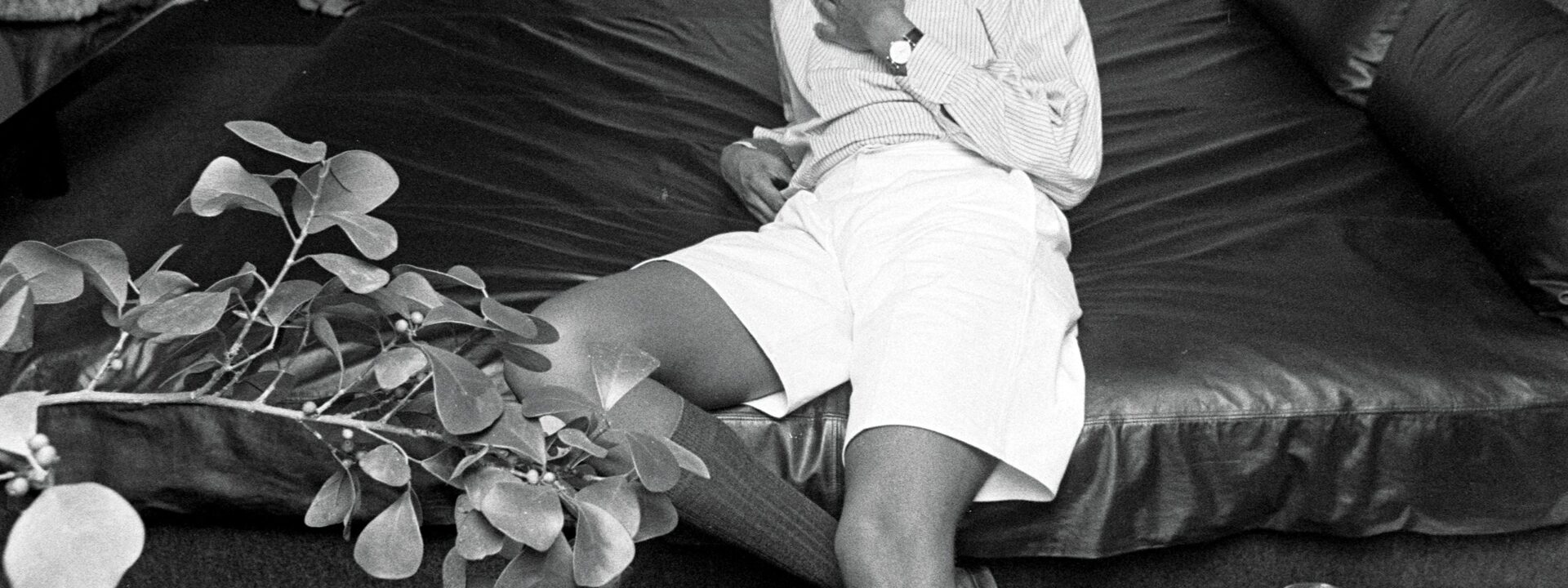André Leon Talley: Style Is Forever
A new exhibition at the SCAD Museum of Art in Savannah (August 15–January 11) and the SCAD FASH Museum of Fashion + Film in Atlanta (October 15–March 1) tells the remarkable story of a man who rose from the racially divided Old South to conquer the fashion world—and it does so through the clothes he wore.
Long before I knew André, he had already lived a fascinating, complex, and unpredictable life. To me, he was almost mythical—a blend of confidence, glamour, kindness, and deep faith. I later learned he was raised in Durham, North Carolina, mostly by his grandmother Bennie Frances Davis, who worked as a cleaning lady at Duke University for 50 years. She took great pride in her appearance, believing that dressing well was both a sign of respect for others and a gift to oneself—a lesson André cherished.
After excelling at Brown University, André moved to New York in 1974 and began an apprenticeship at The Met’s Costume Institute under the legendary Diana Vreeland. Though he adored the city, money was tight, so he thrifted incredible finds—like the long military coat he wore everywhere, even to The Met’s after-party, where he joined other young hopefuls watching guests rush to their limousines.
His wardrobe became his signature: a pith helmet, crisp army shirts, a safari jacket, and Bermuda shorts—always polished, always unique.
Fast Friends
Vreeland, who once said of André, “He was the only person who knew more about fashion than I do,” introduced him to Andy Warhol, who gave him his first job at Interview magazine. In 1976, photographer Sal Traina captured him at Calvin Klein’s apartment in an outfit that perfectly captured his style—knee-length white shorts, a starched striped shirt with a ribbon tie, a bold straw hat, and thigh-high socks that made his long legs seem endless.
From New York, André moved to Paris in the late ’70s to become a fashion editor for WWD. Towering at six-foot-six, he commanded every room in his signature look: patent evening shoes, double-breasted suits, a satin bow at the neck, and a polka-dot cravat in his pocket. Whether escorting Iman or Cher, he was impossible to miss—the center of attention, the protector, the entertainer.
When I first saw him at Paris couture shows in the mid-’80s, he was already an icon, moving effortlessly among fashion’s elite—Diane von Furstenberg, Karl Lagerfeld, Paloma Picasso, and more. By the time I joined Vogue in 1992, his voice was unmistakable, booming through the office: “My dear, have you seen the beige of Calvin’s coats…?”
When André returned to the States years later, I took over his role as European editor. I worked tirelessly—it was my passion—while André would sweep in occasionally, creating a whirlwind of excitement before vanishing again. His presence was magnetic, his influence undeniable.
André Leon Talley’s legacy is one of unapologetic individuality, a testament to how style can transcend circumstance. This exhibition celebrates not just his clothes, but the extraordinary life they adorned.André Leon Talley was full of unforgettable one-liners. When he arrived at a Dries Van Noten show in the early ’90s with Anna Wintour, a colleague admired his zebra stole. “Darling,” he quipped, “this is the rug from the Ritz!” But beneath his flamboyant persona lay deep intelligence, strong principles, and a commitment to amplifying Black voices in fashion.
He lived in a charming 1840s country house north of Manhattan, filled with bold Victorian furniture and Warhol paintings—including one of Diana Vreeland styled as Napoleon. His vast wardrobe took over most of the bedrooms.
After leaving Vogue, he devoted himself to the Savannah College of Art and Design (SCAD), where he curated an impressive costume collection. He convinced fashion icons like Tom Ford, Miuccia Prada, and Marc Jacobs to visit SCAD and mentor students. The collection grew with donations from Anna Wintour, Cornelia Guest, Deeda Blair, Patricia Altschul, and others—eventually including his own extravagant wardrobe, now showcased in a stunning exhibition.
And what a wardrobe it was! For the 1999 “Rock Style” Met Gala, he wore Tom Ford’s floor-length embroidered leather coat, resembling an 18th-century tapestry. At the 2004 “Dangerous Liaisons” gala, he dazzled in a Chanel Haute Couture opera coat—pale gray silk faille with delicate feather trim and antique buttons gifted by Karl Lagerfeld. For the 2011 “Alexander McQueen: Savage Beauty” exhibition, he chose a striking kingfisher-blue Balenciaga coat by Nicolas Ghesquière, paired with a navy Ralph Lauren suit and raspberry-hued Roger Vivier shoes.
As his weight fluctuated, his style evolved. He still wore bespoke suits (from Huntsman, Richard Anderson, and Ralph Lauren), but layered them with dramatic coats—like Prada’s alligator-skin designs in every color imaginable, or Norma Kamali’s bright red “sleeping bag” coat. He accessorized with oversized Hermès, Louis Vuitton, and Gucci bags, plus luxurious stoles (sable from Fendi, mink with Louis Vuitton logos—casual, of course).
In his later years, when custom suits no longer fit and his feet outgrew designer shoes, his flair for the extraordinary never faded.Instead of fancy Blahnik or Vivier shoes, he chose custom Uggs and caftans—though these weren’t ordinary caftans. They were stunning, expertly tailored pieces by designers like Dapper Dan, Tom Ford, Gucci, Patience Torlowei, Diane von Furstenberg, and Ralph Rucci. He looked regal in them.
Above all, he cared deeply for his SCAD students, supporting them wholeheartedly—especially the Black students, whom he encouraged with particular warmth. In the years after his time at Vogue, I believe André grew more open, more down-to-earth, less distant—or at least, that’s how he seemed to me.
Not long before his death in 2022, he said, “I hope to be remembered as someone who made a difference in young people’s lives—who guided them, helped them chase their dreams and build their careers. That’s the legacy I want to leave.”
